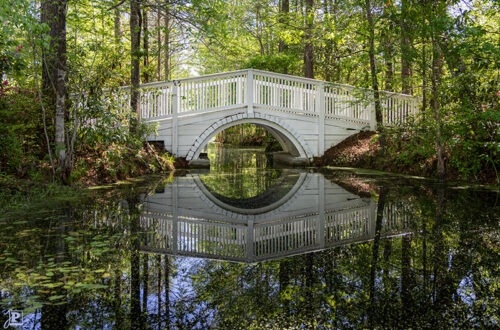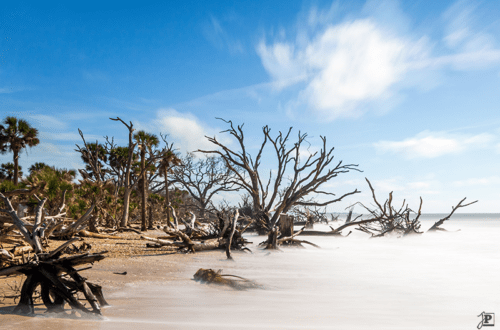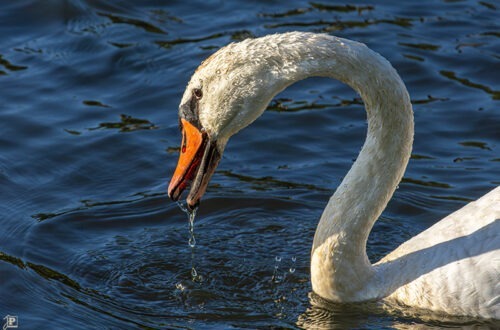Flashy Flowers
Summertime – the ideal time to photograph flowers. But what to do if you don’t want a photo like any other? Get out the external flash and turn day into night – and the flowers into fireworks…
Motif search in the garden
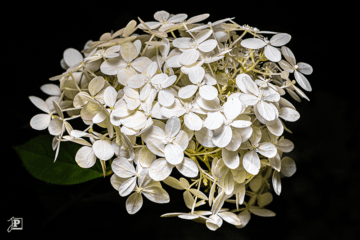
We live, surrounded by gardens, in a back building, so that from spring onwards there is a constantly changing abundance of photo motives. In order not to take the same photo over and over again, the question arises at some point as to how to best stage a plant.
The most obvious way is to use a telephoto or macro lens. This allows you to get a single flower with all its details into the picture, while the surroundings disappear into a soft blur.
But I wanted to go one step further and make the background become completely black. The idea was to make the flower look like it was floating in empty space.
Suitable motifs with free-standing flowers were quickly found: Hydrangeas, hibiscus, roses and other perennials in all colors and sizes offered themselves.
Playing around with lightning
You can do many interesting things with external flashes – much more than just brightening up a dark room. With the right settings, you can also achieve the exact opposite. The trick is that flashes are very bright – many times brighter than daylight – but only for a very short moment.
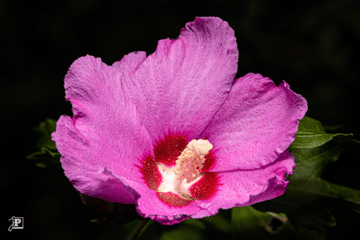
“How to get every background black” by Stephan Wiesner (YouTube Link; Video is in German) was one of the first photography tutorials I watched. Basically, you set up the camera in such a way – short exposure time, small aperture, lowest ISO value – that practically no daylight falls onto the sensor: a photo taken this way stays completely dark. And then you set the flash so that you can see something again – but only what is illuminated by the flash.
Since I took the photos on a sunny afternoon, the settings were somewhat extreme: at an aperture of ƒ/8 and ISO 100, I had to reduce the exposure time down to 1/4,000th of a second until the background was dark enough. So the flash had to work hard in high-speed mode to achieve the desired effect.
It is also important to note that the external flash was not mounted on the camera. I held it in my left hand and remotely triggered it by radio transmitter, so that I could position it freely. Holding the camera with the macro lens in just my right hand was shaky, but at a four thousandth of a second exposure time, that did not matter.
Not all flowers are alike
What really surprised me in this photo session was how different the various flowers look when you turn the light conditions upside down like this. Above all, it quickly became clear that the idea did not work for every flower. Some casted too many shadows onto themselves due to complex shapes; others had too much foliage in the immediate vicinity, which the flash of course also illuminated. However, I wanted to isolate the flower in the picture with just the flash, and not with the garden clippers. Also, flowers that were too large were not suitable as well, because the lighting became too irregular.
With hydrangea and hibiscus, the first successes were achieved after I had gradually found out the correct settings for the flash intensity and the distance between the flash and the camera by trial and error. The big wow-effect finally came with the mimosa, whose unique flowers have a very special effect in the flash light…
The result
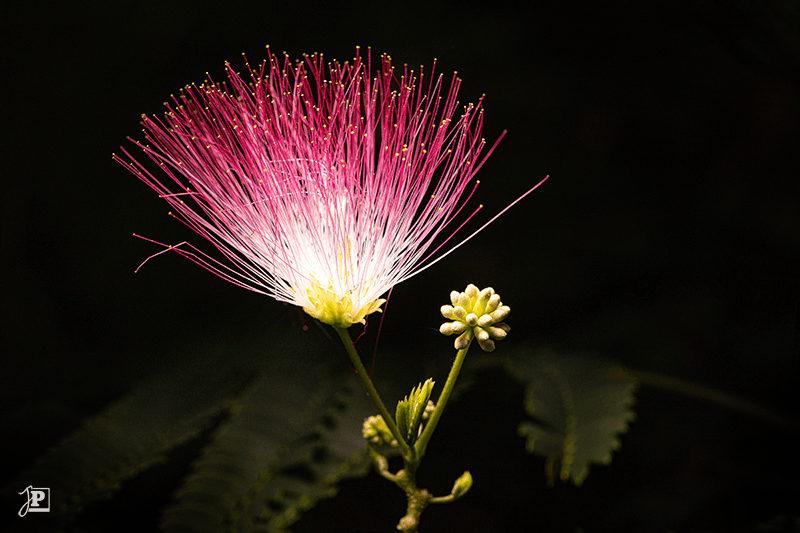
Less like a tree blossom, more like an anemone under water: the fine flower hairs transmit the flash light like glass fibers, so that the blossom seems to glow from within. With this amazing effect, the ‘mimosa in the spotlight’ made it onto the May page of my 2020 calendar.



